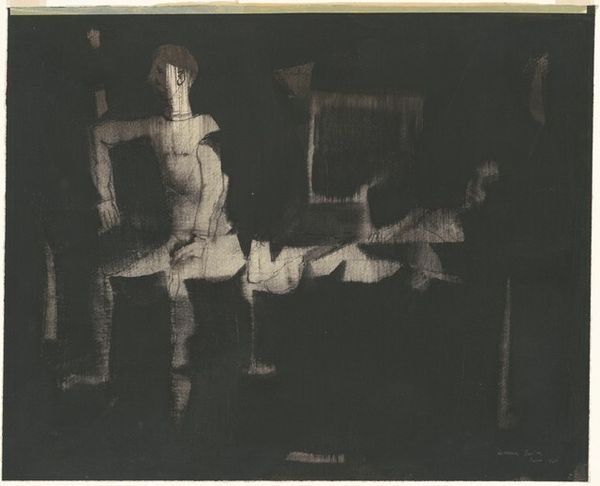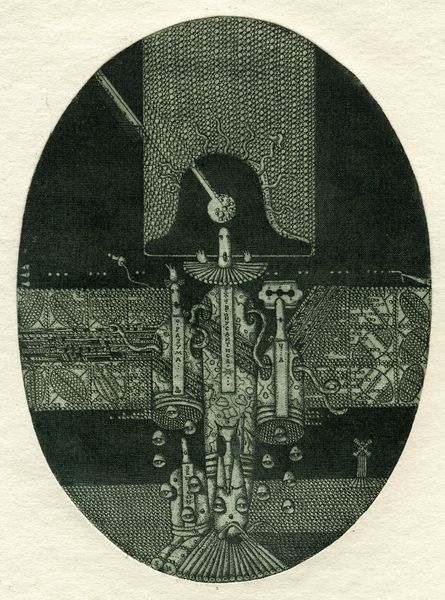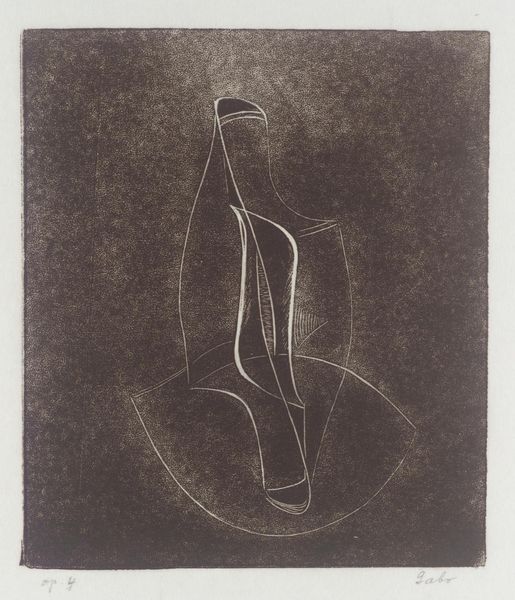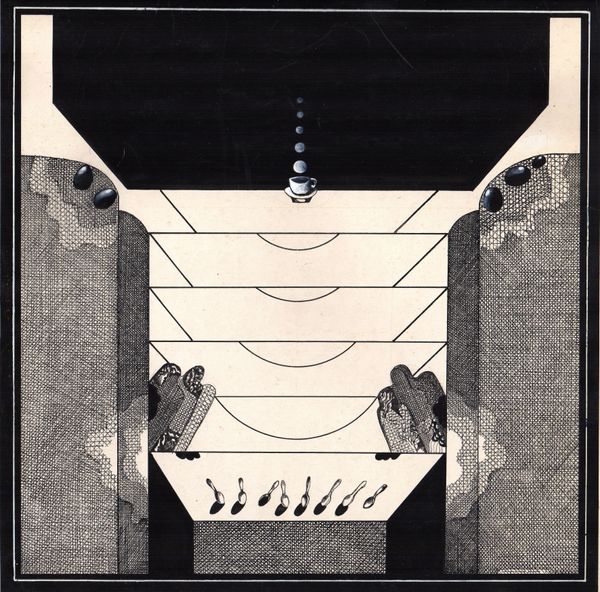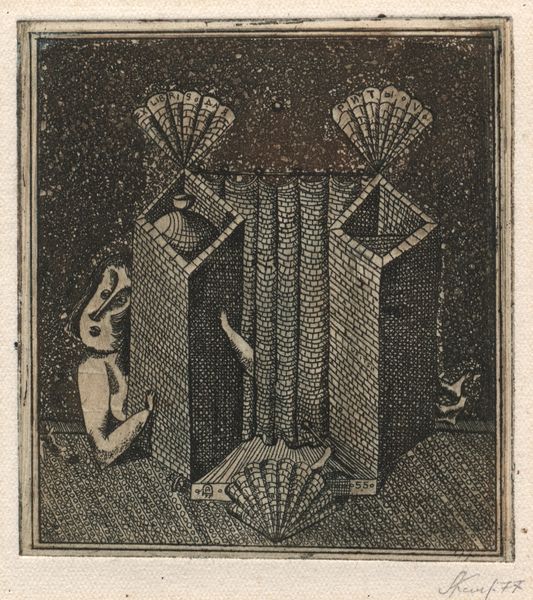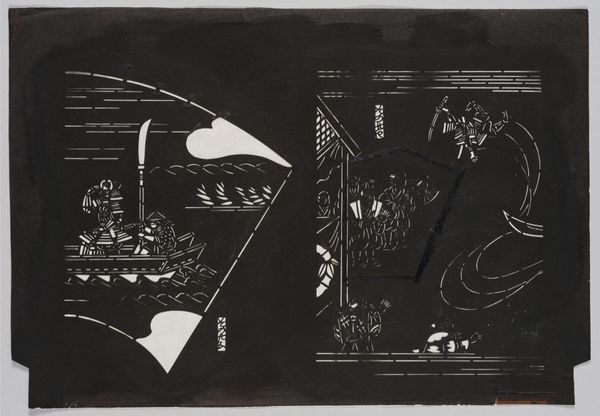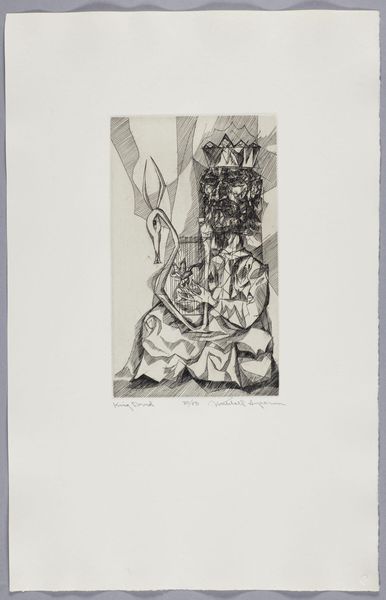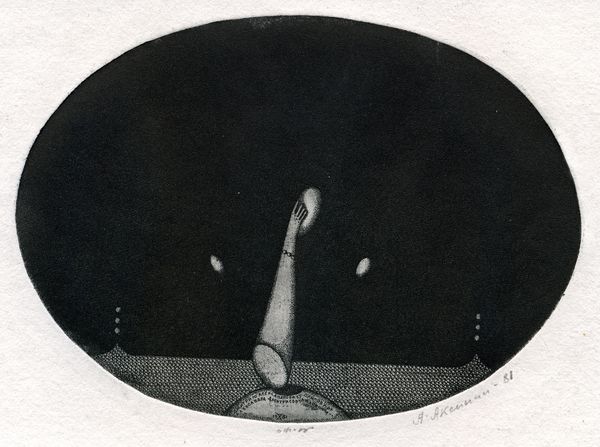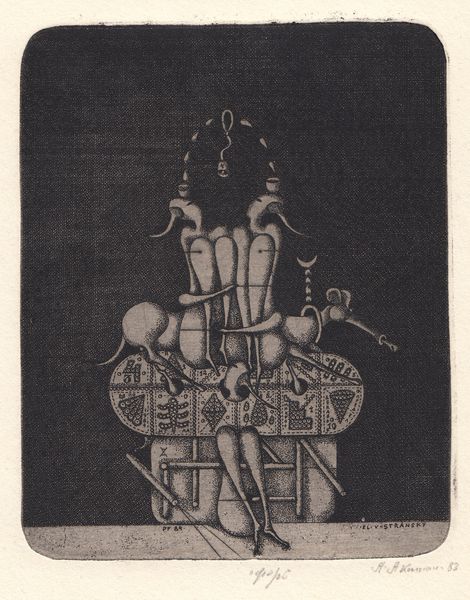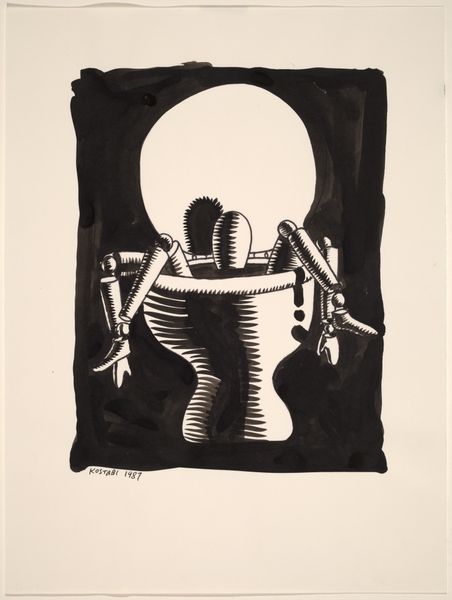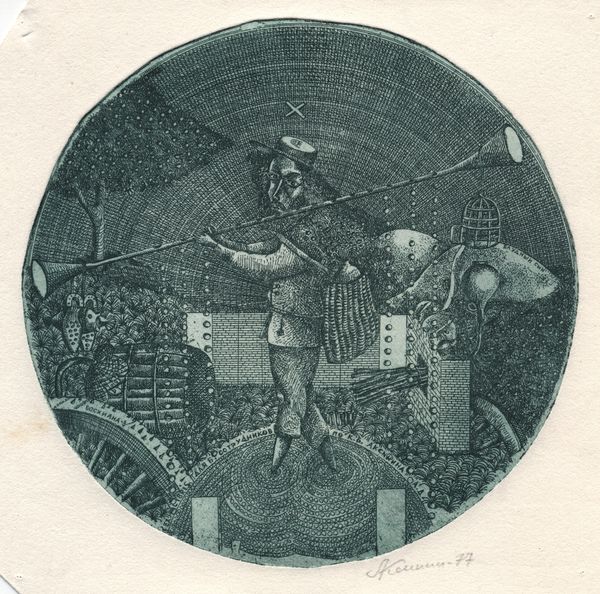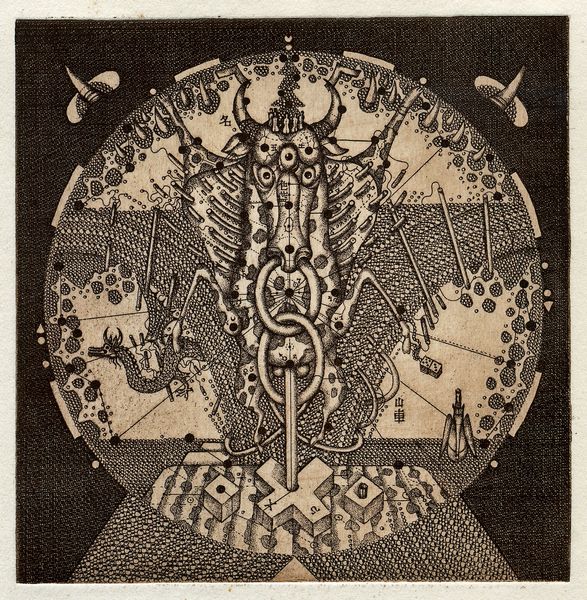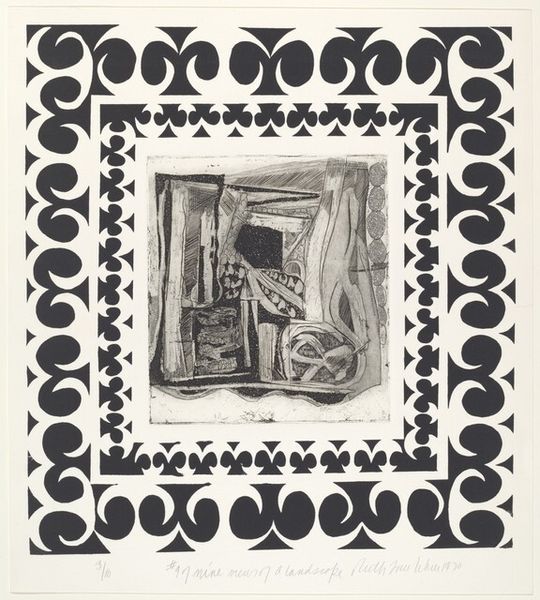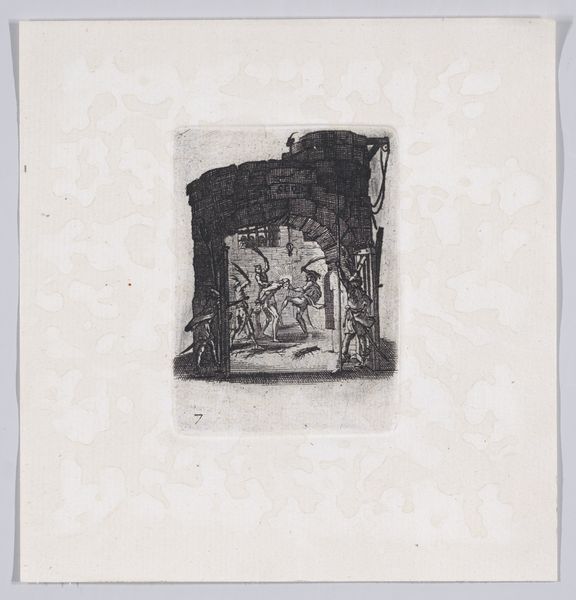
Copyright: Oleksandr Aksinin,Fair Use
Curator: Oleksandr Aksinin created "Cup" in 1983, using ink and pen to explore the intersection of surrealism and symbolism. It's a fascinating drawing. What strikes you first? Editor: The stark contrast. The deep black background against the almost luminescent whites gives it an ethereal quality. The textures are so carefully rendered with the ink, it almost feels like an etching. What a strange composition, though. Curator: Indeed. Aksinin's work frequently engages with themes of cultural identity within the constraints of the Soviet system. A cup might seem like an everyday object, but during the Soviet era, shared meals and tea-drinking were significant social and political acts, reflecting communal values but also state control. Editor: Interesting. For me, the image evokes something far more dreamlike and psychological. Look at the figure perched above the cup—bound and isolated, yet offering a gift. It brings to mind Jungian archetypes and the complexities of the self. The artist manipulates figure-ground relationships effectively with high contrast. Curator: Yes, Aksinin was walking a tightrope, making art within a system that demanded socialist realism, whilst his imagination delved into forbidden zones of subjective expression. The surreal elements – the fish, human heads surrounding what’s in the cup – represent the anxieties of individuality submerged beneath collectivist pressures. He found ways to subvert through symbolic language. Editor: That certainly provides a deeper context for interpreting the somewhat unsettling imagery. Looking closer, I now understand how Aksinin layers these social narratives with the pen strokes to suggest volume and depth but it’s not photo-realistic by any means. The ambiguity adds to its strength. Curator: Precisely. Aksinin’s "Cup" acts as a powerful visual metaphor for the individual spirit negotiating oppressive cultural forces, subtly protesting while outwardly conforming. Editor: I can appreciate the dual readings now, how it operates on both formal and contextual levels, an experience in monochrome tones and cross-hatched detail. Curator: It’s a window into an artist’s subtle rebellion in a time when open dissent was dangerous. Editor: A quiet, yet resonant piece.
Comments
No comments
Be the first to comment and join the conversation on the ultimate creative platform.
